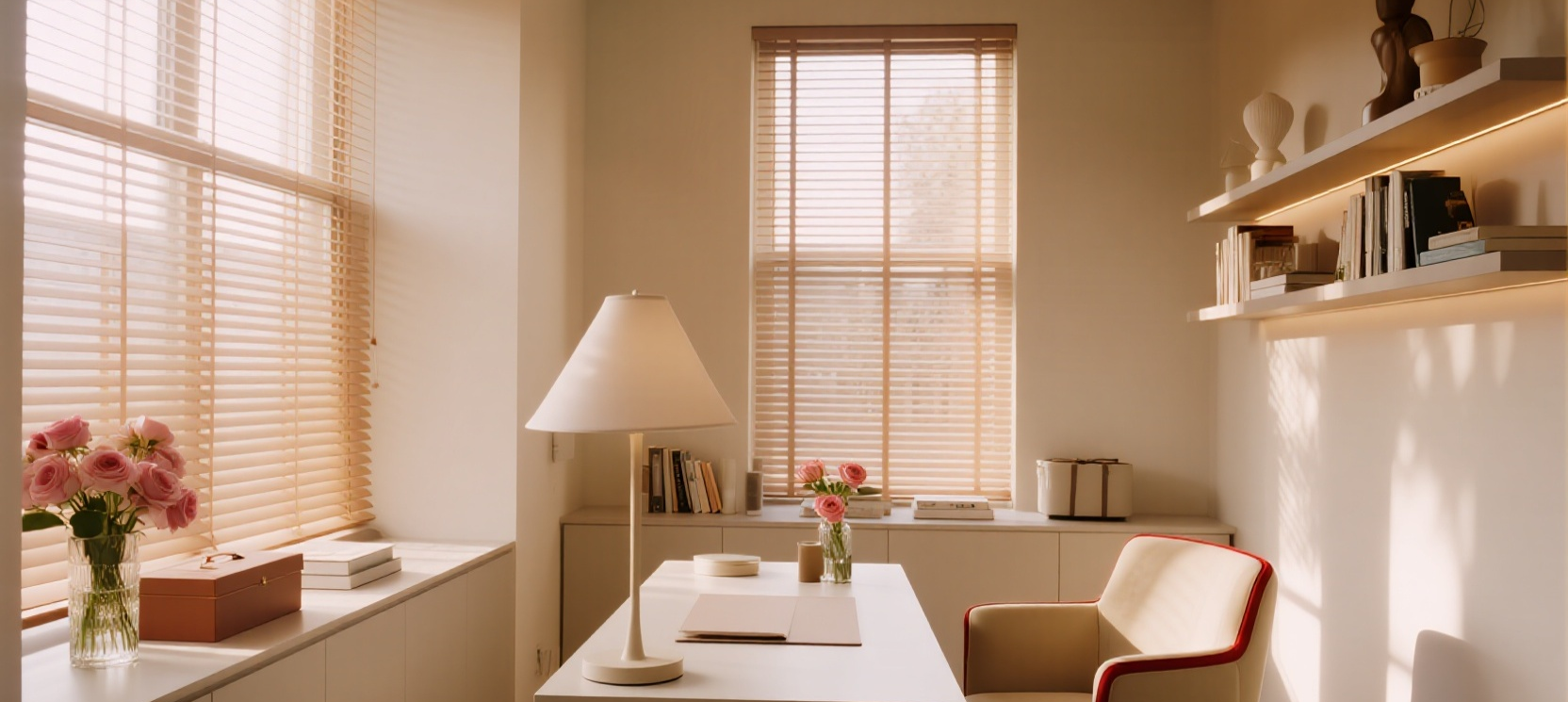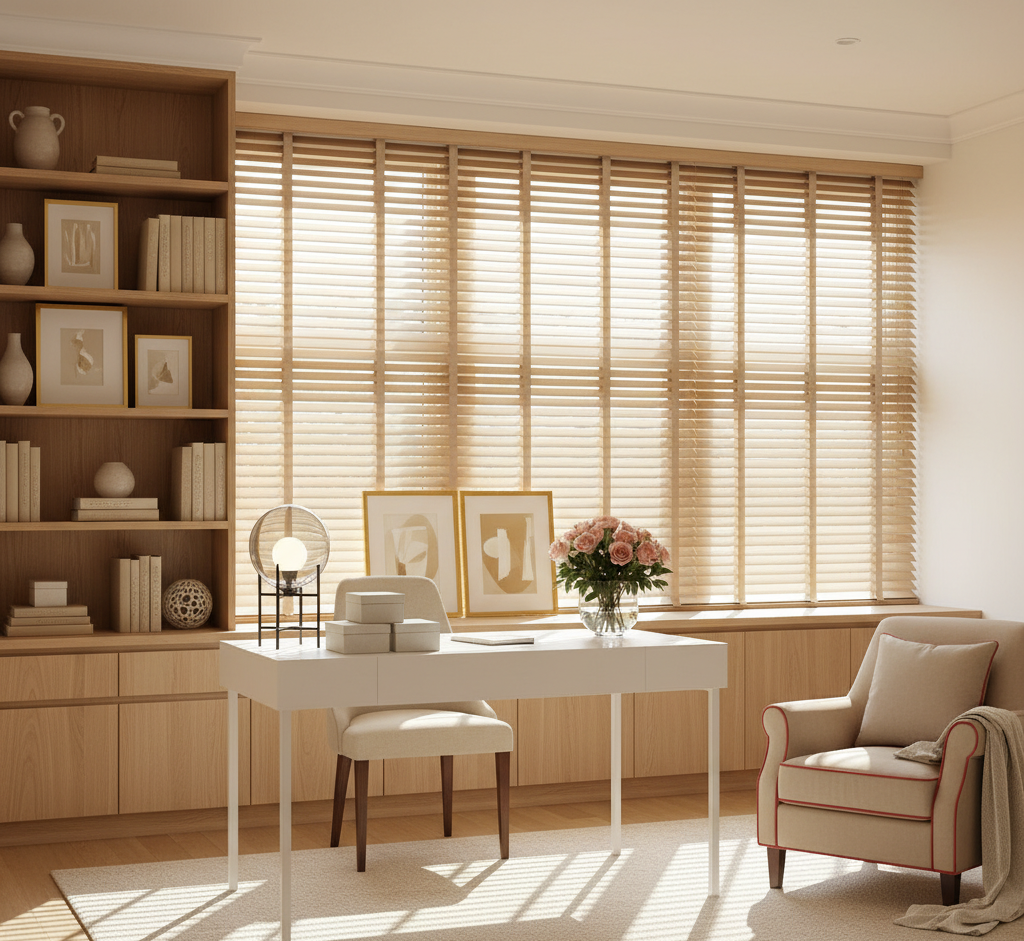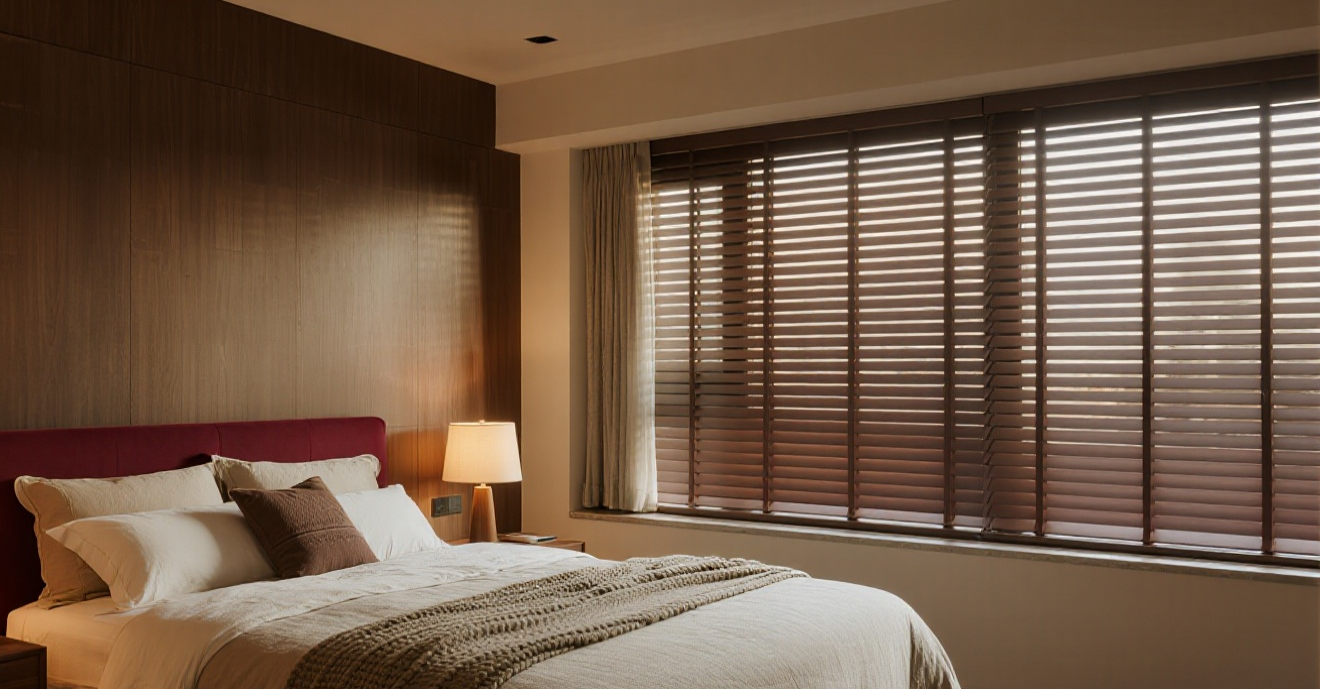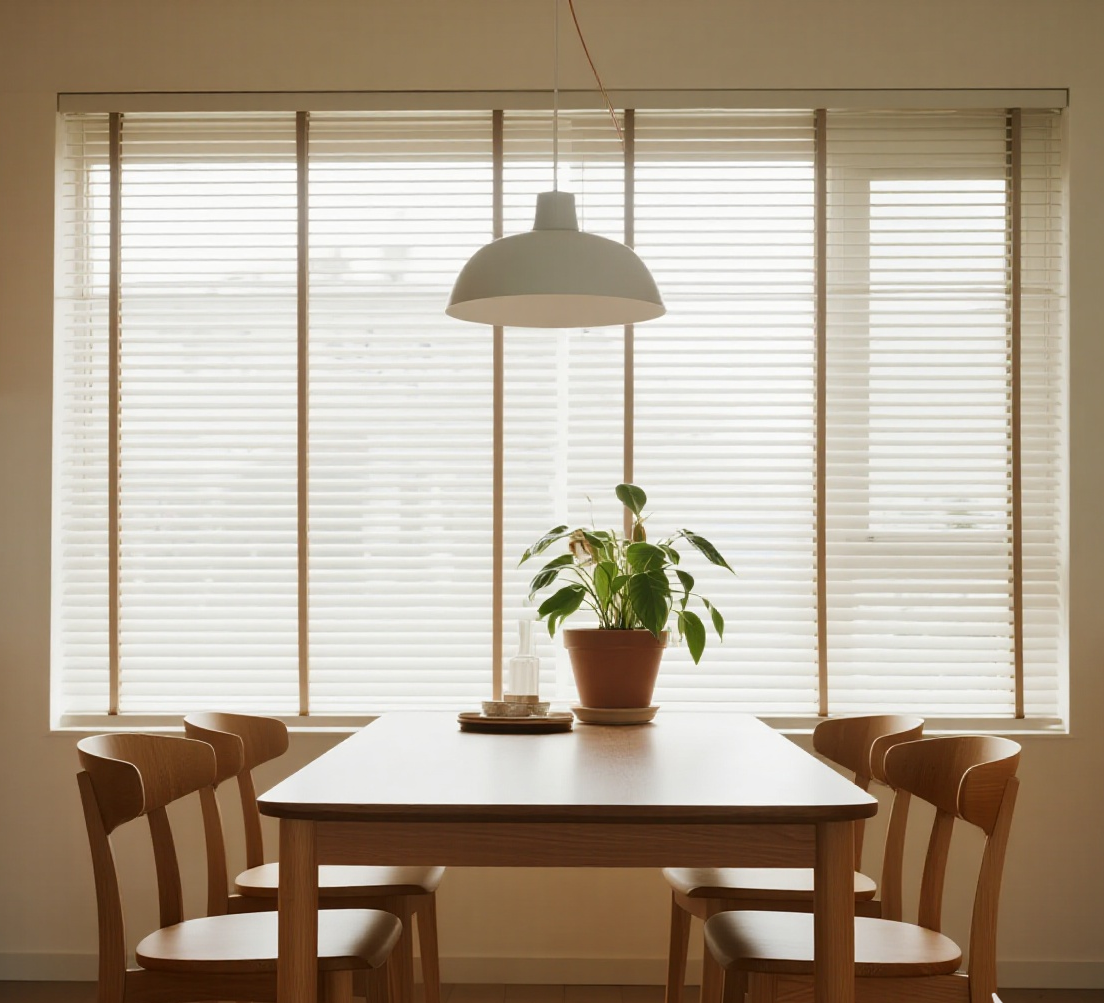What is Venetian blinds?
Venetian blinds combine style and function, fitting effortlessly into both modern and classic interiors. With easy light control, a choice of materials like aluminum, wood, or faux wood, and various slat widths, they offer a customizable look that’s low-maintenance and timeless.
The benefits of Venetian blinds
Venetian blinds bring timeless style and everyday convenience to any space. With adjustable slats, you can easily control light and privacy, while choosing from a range of materials and finishes to suit your décor. Durable, low-maintenance, and endlessly versatile—they’re a smart choice for every home.
Frequently Asked Questions
What are the styles of Venetian blinds?
1. By Material
- Aluminum – Lightweight, affordable, modern, moisture-resistant (great for kitchens/bathrooms).
- Wood – Warm, classic look, fits traditional or cozy interiors.
- Faux Wood (PVC/Composite) – Looks like real wood but more durable in humid areas.
- Vinyl – Budget-friendly, easy to clean.
2. By Slat Size
- Mini Blinds (15–25 mm slats) – Sleek, modern, often aluminum.
- Standard Slats (35–50 mm) – Most common, balance of light control & view.
- Wide Slats (up to 65 mm) – Bold look, lets in more light when open.
3. By Finish & Design
- Glossy / Matte – Modern or subtle styling.
- Textured / Embossed – Adds depth, can mimic wood grain.
- Perforated – Allows filtered daylight while keeping privacy.
- Two-tone or Patterned – Decorative variation for statement windows.
4. By Operation Style
- Corded – Traditional tilt & lift cords.
- Cordless – Cleaner look, safer for kids/pets.
- Motorized – Remote or smart-home controlled.
How to install Venetian blinds?
Step 1: Choose Mount Style
- Inside mount – Fits inside the window frame, neat look.
- Outside mount – Covers the frame, better for small windows or light blocking.
Step 2: Mark Bracket Positions
- Hold brackets at top of window (inside or outside).
- Use a level to ensure they’re straight.
- Mark screw holes with a pencil.
Step 3: Install Brackets
- Drill small pilot holes.
- Fix brackets securely with screws.
- Double-check alignment.
Step 4: Attach the Headrail
- Slide or snap the headrail of the blinds into the brackets.
- Make sure it clicks firmly.
Step 5: Test the Blinds
- Lower/raise blinds to check smooth movement.
- Tilt slats to test light control.
How to clean Roman curtains?
🧽 Routine Cleaning
- Dusting: Close slats, wipe with a microfiber cloth, feather duster, or blind-cleaning tool.
- Vacuuming: Use a brush attachment on low suction to remove dust.
💦 Deep Cleaning
- Spot Clean: Use mild soap + water on a damp cloth, gently wipe stains.
- For Aluminum/Vinyl: You can remove blinds, soak in bathtub with warm soapy water, rinse, and dry thoroughly.
- For Wood/Faux Wood: Wipe only with a slightly damp cloth; avoid soaking to prevent warping.
⚠️ What to Avoid
- No harsh chemicals or bleach.
- Don’t oversaturate wood or faux wood.
- Avoid strong heat when drying.
How to measure Venetian blinds
The perfect Roman curtain begins with precise measurement. After selecting the installation method inside or outside the window frame, measure according to the instructions below to ensure a tight fit.
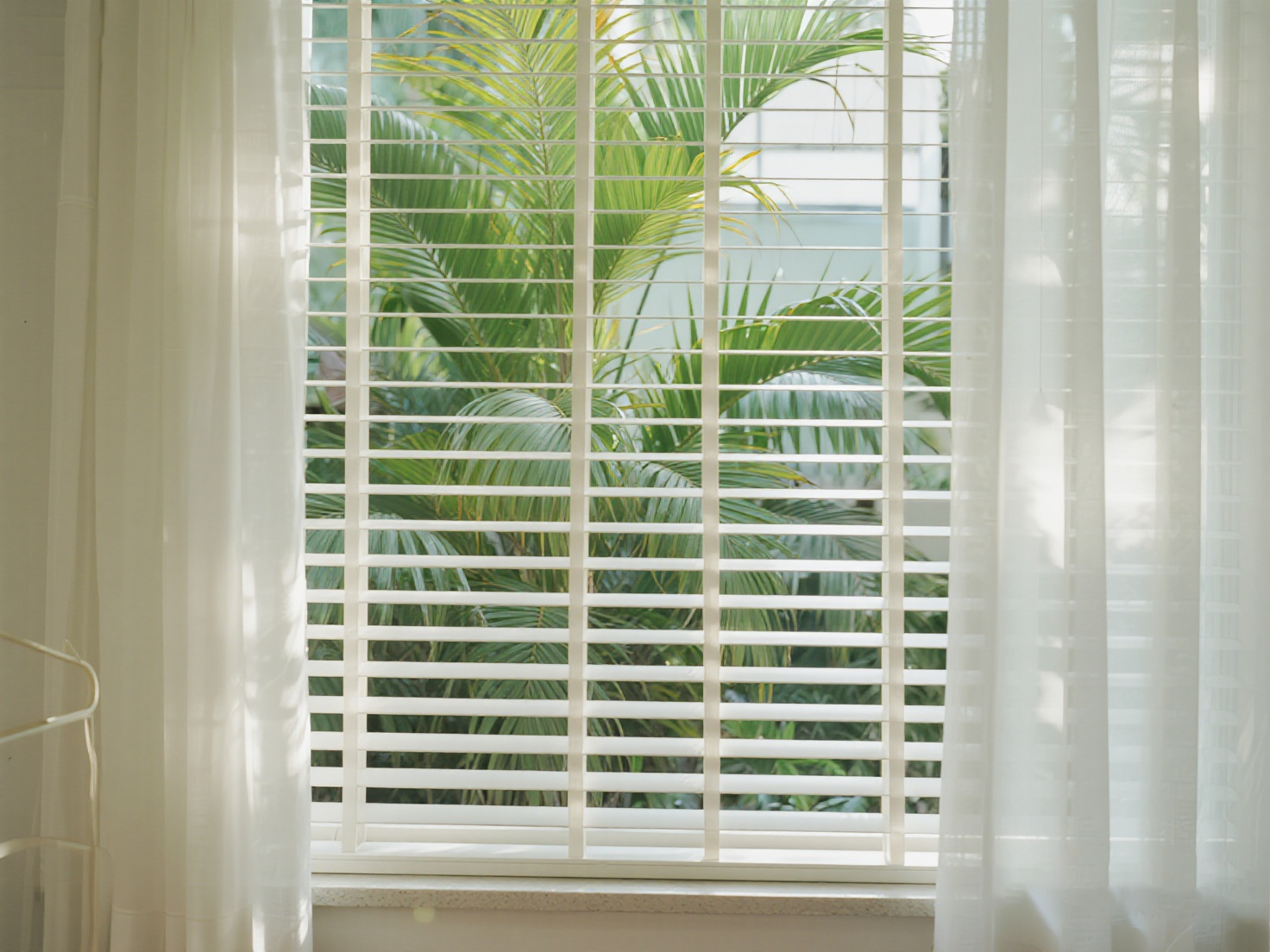
Roman Shadesinside mountedWhat size to order?
Width of the Shade: measure the window width, subtract 1/2" tomake the operation of the roman shade easy.
Length of the Shade: measure the length of the recess subtract 1/2"
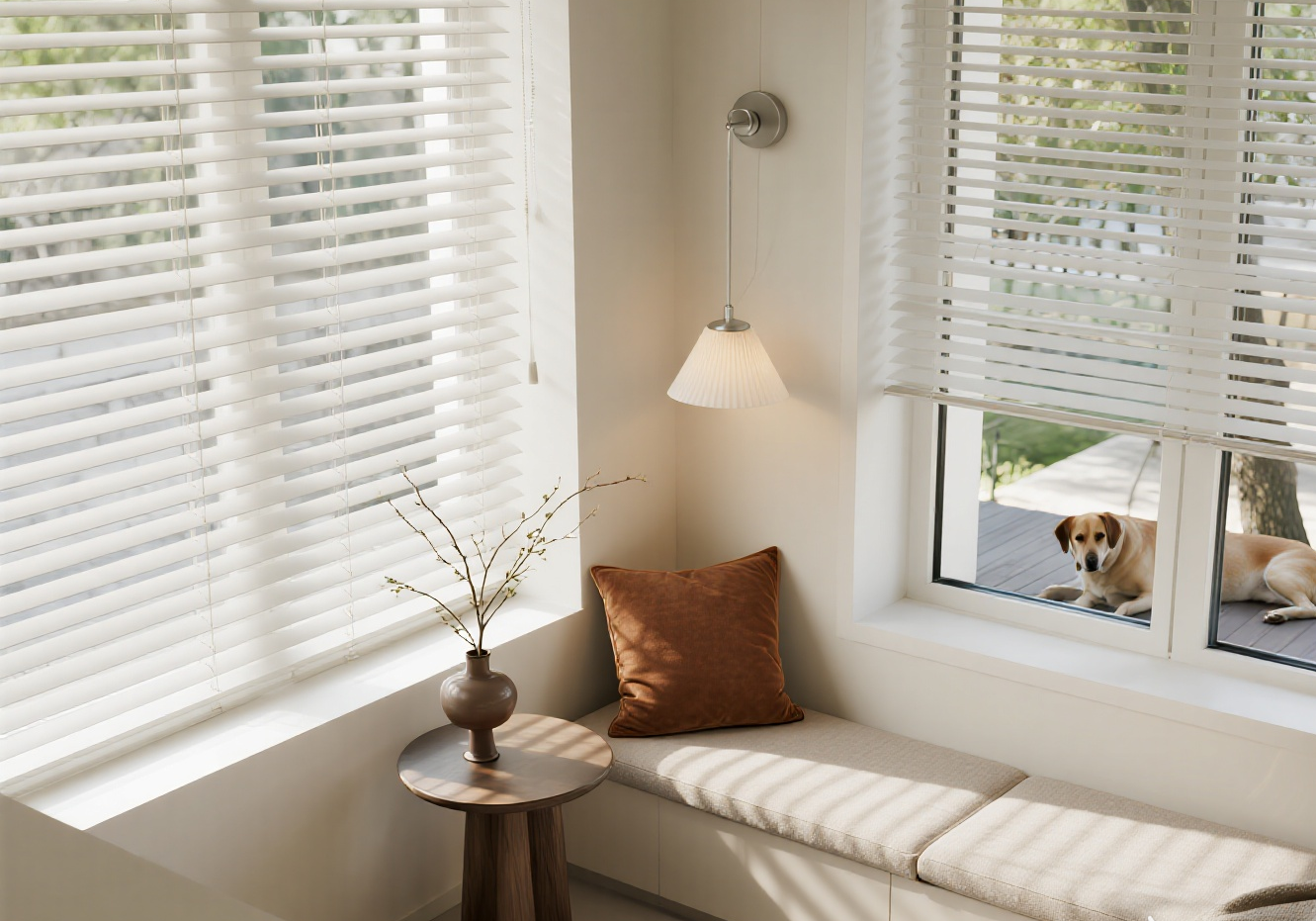
Roman Shades outside mountedWhat size to order?
Width of the Shade: measure the window width, add 2-4" from each ofthe sides.
Length of the Shade: add 10-1" from the top of your window if you wish tohave folds above the window and enjoy an unobstructed view
Otherwise you may place the shade just above the window, and additiona3" length will be enough. Subtract 1/2" from the length, as your shadeshould be 1/2" above the window or the floor.




